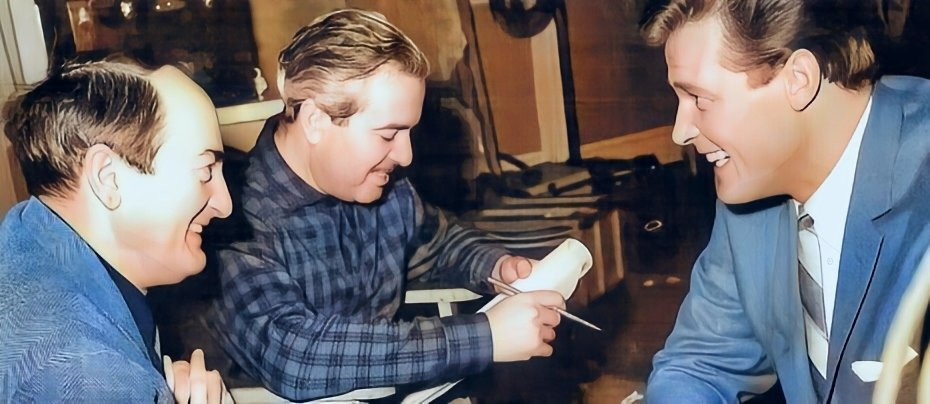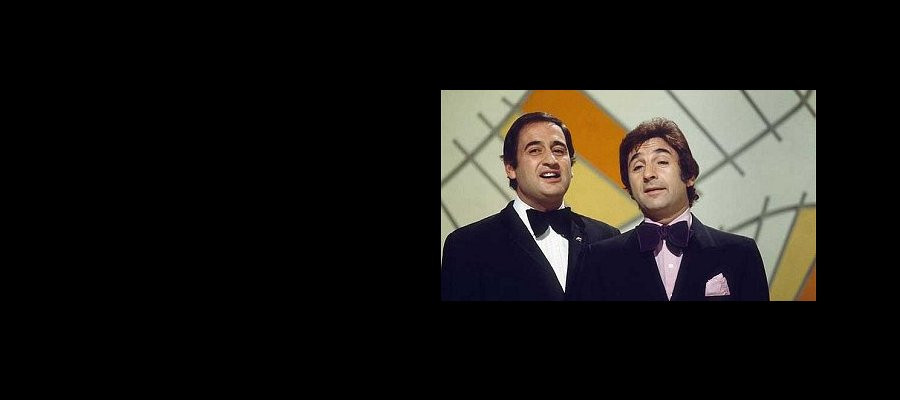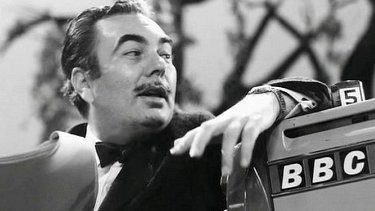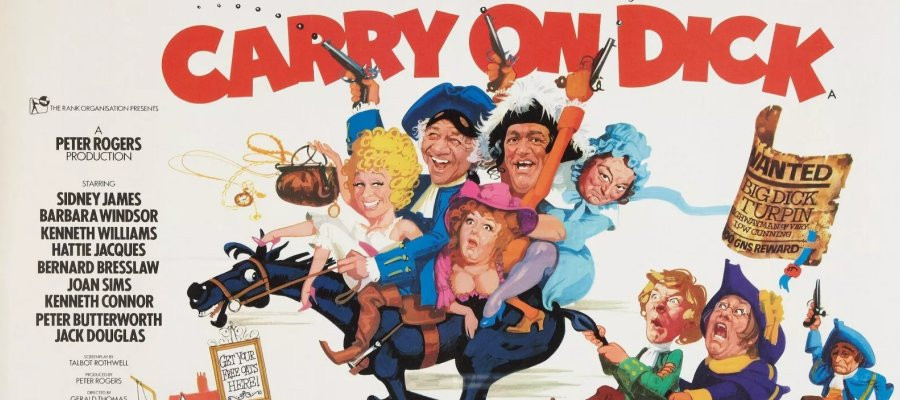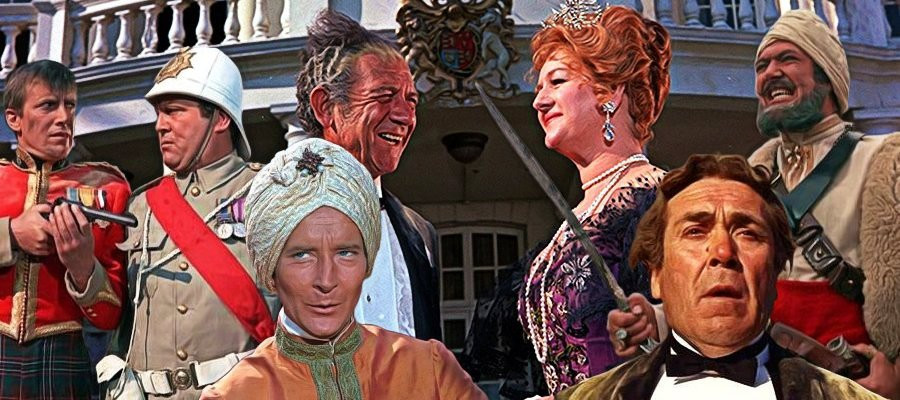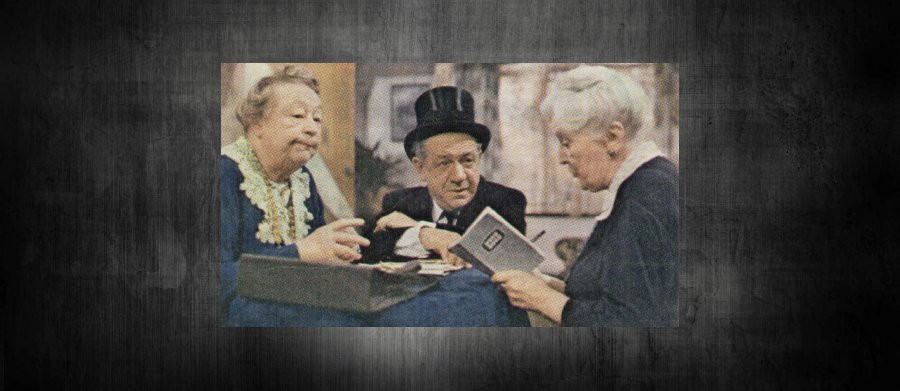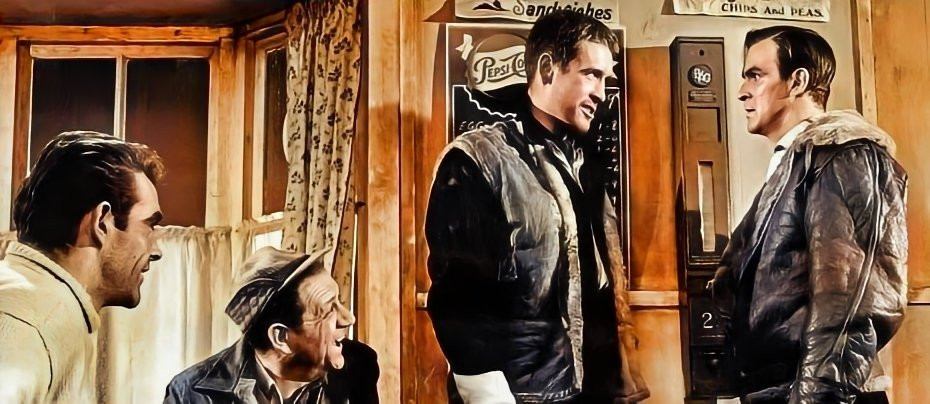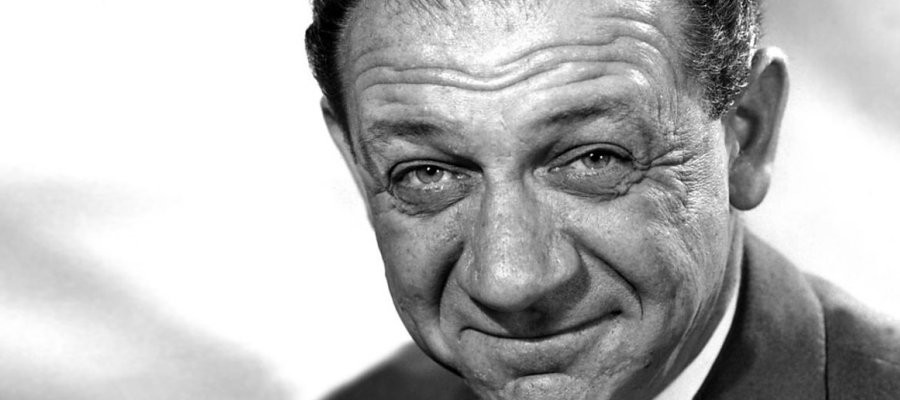
Sid James
With his battered features, wicked leer and possibly the most recognisable laugh in show business, Sid James appeared to the world as a streetwise Cockney ex- heavyweight boxer, an image that he actively encouraged because he knew that it would endear him to millions of fans worldwide. But Sid was no more an East End boy than he was a fighter. "Nobody could ever think of me as a star, " Sid once said. " All I can do is play myself." But being 'himself' was all he needed, because Sid James was loved by millions worldwide, and when he tragically died on stage at the Sunderland Empire on 26th April 1976, the world lost a unique talent.
Laurie and Reine Cohen had been living in Johannesburg for a year when Reine discovered she was pregnant. In 1911 she gave birth to a boy, who they decided to call Maurice after one of Laurie's older brothers. The couple had been touring the theatres as an accomplished vaudeville act, usually as second-spotters, and with Maurice's arrival the act was temporarily broken up. Thankfully, Laurie, billed as Lou James, was an accomplished stand-up comedian, so he was able to support the family fairly comfortably.
However, news began to reach Reine that during her absence Lou had been entertaining a number of ladies in his dressing room. So, when Reine discovered that she was pregnant for a second time she was determined that the impending birth was going to cause as least disruption to the act as possible.
On May 8th 1913, Reine gave birth to a second boy in the back room of her grandmother's house in Hancock Street, Newcastle, Natal. The boy was named Sidney Joel Cohen although it was shortened by other family members to Sollie. 'As soon as my mother was able to get up and about my parents were on tour again,' Sid later recalled. 'I was in a skip in the wings while my mum and dad were on stage doing their act.'
By the age of three Sollie found himself thrust in front of the footlights and for a time it must seemed as though this was destined to be his future, as part of the family vaudeville act. But in 1919 Reine and Lou were spotted by an agent who offered them a tour of Australia. They had no hesitation in accepting the offer. Sollie and Maurice were unceremoniously left with relatives in Natal while their parents left to pursue their careers. As far as Sollie was concerned it was an act of betrayal that shattered his relationship with his parents - especially his mother - forever.
When the Australian tour finally finished in 1921, Reine returned home alone to collect her children. Now eight years of age, Sollie was sent to Hospital Hill Primary School, where his cousin Joel Cohen was a pupil. To add further confusion, the family had taken to calling Joel 'Sidney'. It was the young lads class teacher who resolved the problem. 'From now on you will be Joel, and Sollie, you will be called Sidney.' Sidney returned home and informed his mother of the name change. 'Okay,' she said 'we may as well change your surname, too.' The following day Sidney walked into school and told his teacher that from now on he would be known by a new name...Sidney James.
Sid was not a good pupil. Academically he showed very little ability or interest and was often playing truant. He left school without any formal qualifications and was allocated a place at a nearby Trade School where it was hoped he'd learn to be an electrician. When that failed his mother handed him an ultimatum. He could either join the family business (Reine had opened a hairdressing salon a few years earlier) or he could get out and fend for himself. He chose the former.
Surprisingly, Sid found that he had an aptitude for cutting hair and after serving a year's apprenticeship under his uncle, Sonnie Solomon, he was cutting and styling hair for some of Marie Tudor Salon's more valued customers. One of them was the daughter of Joseph Delmont, a rich and respectable member of Johannesburg's Jewish community. Berthe Sadie (Toots) Delmont shared Sid's interest in music and dance -in particular Jazz and the Charleston. This interest rekindled Sid's childhood enjoyment of performing and began to undermine his 'forced' career. After several arguments he quit his job although his growing reputation as a hairdresser meant that offers from other establishments came flooding in. But Sid decided he wanted a complete change of scenery and moved to Kroonstad some miles away. It was 1932. The move did little to placate Sid's dissatisfaction with his career and in an effort to break away he opened a dance school. He hired a large hall at the back of a Kroonstad restaurant and soon found that he had a steady stream of patrons. Not all of them, however, were simply interested in dancing lessons. At 19 years of age, tanned and athletic, Sid James discovered sex, and by all accounts there was no shortage of females who would turn up for dance lessons and then expect a little extra for their money.
By late 1934 Sid had become tired of Kroonstad and was ready to return to Johannesburg. Marie Tudor welcomed him back and before long Sid and Toots Delmont were making plans for their wedding. Joe Delmont was horrified that his daughter should be marrying Sid, but also realised there was little he could do. On 12th August 1936 they married. Joe's wedding gift was a salon that he purchased for Sid in the basement of the Carlton Hotel. The hotel was owned by the Schlesinger family who almost twenty years later would invest in one of Britain's first independent TV companies.
By this time Sid had acquired another obsession -gambling. Johannesburg had two racetracks and Sid was a constant visitor to both. Now the owner of a thriving business employing around thirty stylists, Sid enjoyed the freedom that being a boss allowed him. He was full of self-confidence, had an instantly likeable manner about him and made friends very easily. Too easily. By the end of October 1936 - just eighty days after he married Toots, Joe Delmont discovered that Sid had been having an affair with a fellow hairdresser who was now pregnant. For the sake of his daughter, Joe paid the woman a substantial amount of money on condition that she leave South Africa and never disclose the truth.
By February the next year Sid had got himself involved in another relationship with the same result. Once more Joe paid the girl off and once more Sid returned to his wife. A month later it was Toots' who informed Sid that she was expecting a child. Sid was furious. He claimed it was a plot by Joe to try and control him. Elizabeth James was born in December 1937 but Sid, who took little or no interest in the pregnancy was equally unmoved by the birth. Some months earlier Sid had joined the Johannesburg Repertory Players and just before Christmas was offered a small part in 'Double Error' by Lee Thompson. Through his connections at the Rep, Sid was offered a part in a new series of children's radio broadcasts. He arrived at the studios of the South African Broadcasting Corporation and was partnered with a sixteen-year old girl called Moira Lister. 15 years later the two of them would work together again on another radio show -'Hancock's Half Hour'.
Sid had more offers of work coming in from the SABC and was soon offered his first Johannesburg Rep lead in John Steinbeck's 'Of Mice and Men'. In the meantime his and Toot's relationship had reached breaking point and ultimately it ended in divorce. Joe Delmont demanded the return of the salon he had purchased as a wedding present, but Sid refused to relinquish control. Delmont promptly put a price on Sid's head. Sid, perhaps wisely, decided it was time to join the Army. With his theatrical background, Sid, after spending some time with the South African Tanks Corp in Abyssinia throughout 1940, was ordered to return to Pretoria and join the Entertainment Unit. Charged with putting on a show to entertain the troupes and promoted to Corporal, Sid took his company, known as 'The Crazy Gang', to the Middle East, starting in June 1942. The tour lasted eight months during which time the company found themselves pinned down under heavy fire at Tobruk. On his eventual return to Pretoria Sid was promoted to Staff Sergeant.
In 1943 Sid married Meg Sergei. The couple had known each other since 1939, when Sid was still married to Toots, and Meg had volunteered for the Army when Sid signed up. In September 1945 Meg fell pregnant, and with the war almost over the couple began planning their future. An acquaintance of Sid's, Larry Skikne, had received a government grant to travel to London and enrol at the Royal Academy of Dramatic Art. On hearing this Sid and Meg applied for, and received a grant of £450.00. Enough to get them to England and tide them over until Sid could find a job. Years later Sid would help Larry Skikne to choose a new name -one that he became internationally known by; Laurence Harvey.
Sid and Meg arrived in England on Christmas Day 1946. They arranged to stay at 3 Queens Gate Mews near London's Gloucester Road. Sid had bought with him a letter of introduction to playwright Emlyn Williams and had also been given the names of two BBC producers. He wasted no time in writing to them outlining his stage and radio experience and informed the BBC producers that he was able to do American or Cockney accents as well as play tough-guy parts. He was also capable of some comedy.
One of the recipients of Sid's letters, Peter Richmond, invited the unknown South African actor to an interview on Thursday 16th January at 11.30am. A few days later Sid and Meg were out walking through London's West End when they bumped into John Tore and Olga Lowe, some old friends from their last Entertainment Unit party. Tore and Lowe were on their way to an audition to play a gangster and his moll in a British film. At Tore's suggestion Sid accompanied them to Archie Parnell and Company, a theatrical agency that was now being run by Archie's widow, Phyllis Parnell. On arrival at Parnell's office in Golden Square, Sid was promptly offered the part of the gangster, Eddie Clinton, in the film 'Black Memory'. Sid agreed to allow Phyllis to represent him. He had been in England for nine days and had got himself both a film role and an agent.
'Black Memory' was released without much ado; most critics agreed that it was a miserable and insignificant film but during its shooting Sid made friends with Michael Medwin who in turn got Sid a part in a film called 'Night Beat'. As previously, Sid's role was uncredited. But he was beginning to get noticed and by August had signed a standard BBC contract to appear in a Light Programme drama, 'The Fabulous Miss Dangerfield'. By December he had been offered a second radio part and had already appeared in five films. 'It Always Rains On Sunday' is often (incorrectly) cited as Sid's first British screen appearance. The film, made by Ealing Studios, starred Jack Warner and Googie Withers. It was actually Sid's fourth film but was the first for which he received a credit. Critically it was well-received and brought Sid to the notice of a wider audience. Impresario Jack Hylton was one of them. Hylton was looking for new talent for his play, 'Burlesque', which would open in Manchester in December 1947 and transfer to Her Majesty's Theatre in London in January 1948. Sid was offered a small part as a loveable drunk. By the time the play transferred to London Sid's part had been expanded to include an extra scene especially written for him. By the time the play ended its run Sid was already being offered other parts. As well as appearing regularly on the London stage he continued to accept a number of small, walk-on film parts.
On 1st August 1948 Sid took the first steps in a new medium -television. Sid played Sharkey Morrison in two episodes of 'Kid Flannagan', broadcast on 1st and 5th August. Ten days later he landed his first lead role since arriving from South Africa when TV audiences saw him play Billy Johnson in a two-part drama, 'The Front Page'.
On the home front things were not great between Sid and Meg. Although Meg had given birth to a baby girl on 26th April 1947, the couple's relationship was rapidly deteriorating and rumours began to reach Meg of Sid's extra-marital affairs. As a result of this she began drinking heavily and on many occasions Sid would return home to find her drunk, which then led to further arguments. Sid had, in fact, also begun a relationship with a nineteen-year old actress, Valerie Assan.
Early in 1951-film director Charles Chrichton, who was about to begin shooting a new comedy for Ealing Studios, approached Phyllis Parnell as he wanted to hire one of her clients but couldn't remember his name. From Chrichton's description, a rugged looking, gravel-throated actor, it soon became apparent that the man he wanted was Sid James. The comedy, written by T.E.B. Clarke, was about a plot to smuggle gold to the continent. Alec Guinness and Stanley Holloway had already been cast, and Chrichton wanted Sid to play a Cockney safecracker. The film was to be called 'The Lavender Hill Mob'. It was Sid's first 'A' feature movie, and it won an Academy Award for best script. From that moment on Sid appeared in a number of impressive films and was eventually offered a starring role in 'The Square Ring' in which he played the owner of a boxing ring. It was one of a number of films that Sid used to propagate the misconception that he had, prior to his showbiz career, earned a living in the boxing ring. There's no doubt that Sid was quick with his fists whenever it suited him, but in reality he'd never been anything more than a bar-room brawler. Still, the legend was good for the image.
By 1953 Sid was a highly bankable British star and was even attracting interest from America, MGM being the first to cast him in a US production 'Crest Of A Wave' starring Gene Kelly. Another film of note that Sid appeared in that year (in all, he made 10 movies in 1953) was 'Orders Are Orders', a British comedy which starred Peter Sellers, Eric Sykes and Tony Hancock. A wind of change was in the air for British comedy. The standard format for a radio light entertainment show was for it to feature the 'star name' or double act, accompanied by a number of upcoming comedians in small supporting roles, all partaking in a number of different sketches that were broken up by musical interludes. On 1st May 1953 an outline for a new type of comedy series landed on the desk of BBC's Head of Variety. Sid James' star was about to rise even higher...
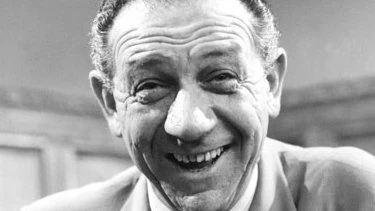
Tony Hancock had been appearing in just such a radio, 'All-Star Bill', when the series producer, Roy Speer was taken ill. His replacement, Dennis Main Wilson, unhappy with the shows content, enlisted the writing talents of two relatively unknown, but talented newcomers, Ray Galton and Alan Simpson. Then in 1953, Galton and Simpson, knowing that the BBC were anxious to give Hancock his own starring vehicle, came up with the concept of a rather pompous character who would hold court in a bed-sit somewhere in London. The show would be centred around the character's hopes and misadventures, and would star other comedians but be devoid of catchphrases, silly voices or musical numbers.
For the series to work, Hancock needed a small circle of friends and a girlfriend, to whom he could impart his words of wisdom, or blame for his misfortunes. Australian actor Bill Kerr, an old Hancock chum was the first to be cast. Second was the former South African radio starlet Moira Lister. To complete the trio of flate-mates, Galton and Simpson knew exactly who they wanted. The just didn't know his name.
The pair had seen the actor they wanted in 'The Lavender Hill Mob', and in order to discover his identity they had to track the film down to a cinema in Putney, where it was enjoying a second release. 'We had to sit through the entire film until the credits came up.' Said Ray Galton. The actor they wanted was, of course, Sid James.
Dennis Main Wilson arranged a meeting with Sid, but to everyone's surprise Sid refused to commit himself to the radio series. Sid wasn't sure that he could cut it in radio comedy, although the excuse he used at the time was that he was earning more money making around ten films a year than he was likely to earn for each of the proposed thirteen radio shows. In the end, Hancock and Main Wilson talked him into doing the first show. 'So I tried one,' said Sid. 'And then I tried two, and I'm very glad I did.'
Alan Simpson vividly remembers Sid's first 'Half Hour' show. 'Sid was so scared he had a trilby hat pulled down over his head and had the scripts arranged on a stand so that he could hide behind them. There was just something he hated about doing radio in front of an audience. We never found out what it was.' Although nervous, Sid still put in a professional performance and Ray Galton remembers him as a tremendous support to Tony Hancock.
Year's later, Moira Lister recalled: 'from the start he (Hancock) was very neurotic and worried about everything. It was never a relaxed and happy show. Sid, on the other hand, was relaxed and easy going.' But the combination worked very well. 'Because Sid was un-neurotic, he was able to cope with Tony's neurosis and was probably a very good balance for him, both in and out of the studio.'
One other joined the cast for that first programme - Kenneth Williams. Although Sid and Ken are always thought of as friends as well as working partners, mainly because of their involvement in the 'Carry On' series of films, they had a very uneasy relationship. Sid didn't care much for Ken's overt homosexuality, and made no secret of the fact.
Personality clashes or not, 'Hancock's Half Hour' became an enormous hit with the public, and was a benchmark series by which all subsequent sitcoms were judged. Sid's first experience of the popularity of the show came eight days after the series ended. As he strode onto the stage at London's Prince's Theatre he was greeted by rapturous applause by the audience, which lasted for a full three minutes. By 1955, 'Hancock's Half Hour' was emptying theatres' pubs and chip shops up and down the country. The TV series, which arrived the following year, had exactly the same effect.
Although Hancock was undoubtedly the star of the series, his performances were enhanced greatly from the benefit of Sid's experience in front of the camera. 'Sid was a very good technician,' said producer Duncan Wood. 'He knew what a reaction shot was all about, and so Tony quickly twigged the reaction shot business.' Through 'Hancock's Half Hour', Sid was rapidly becoming a television star in his own right. Perhaps the BBC should have looked after him better, because to their horror in January 1958 he was poached by Independent Television.
Associated Rediffusion had offered Sid a staring vehicle, playing alongside Miriam Karlin in the Wolf Mankowitz scripted series 'East End, West End'. In it Sid played the part of a Cockney, not far removed from his 'Hancock' character, who tried to make an honest(ish) living by ducking and diving, wheeling and dealing. The series was scheduled to run for a six-week series followed by a seven week break and then another series of thirteen episodes. The first series was to go out on the same night as the 'Hancock's Half Hour' radio series.
Tom Sloan, the BBC's Head of Light Entertainment, wrote to Sid concerned that the second series of 'East End, West End' might make the star unavailable for the next 'Hancock' series. But as it turned out, 'East End, West End' didn't go down too well with the viewing public and the second series was never made. However, determined not to let Sid go again, the BBC offered him a series of his own, to be broadcast between the next two series of the TV 'Hancock' shows. Sid turned them down.
After the failure of 'East End, West End', Sid was worried that he may be outstaying his television welcome. Instead, he accepted an offer to appear in the Tommy Steele movie, 'Tommy The Toreador'. Another film offer, which was made in 1959, was to change Sid's career forever, and inscribe his name indelibly in the minds of the British public.
Shooting for 'Carry On Constable' started on November 9th 1959. The movie was inspired by the popularity of the BBC series, 'Dixon Of Dock Green'. Sid played the part of Sergeant Wilkins, whose job it is to lick into shape the most incompetent set of new recruits imaginable. The film starred Kenneth Williams, who Sid had previously worked with on 'Hancock', and Kenneth Connor, with whom Sid struck up a great friendship.
In the autumn of 1959, Tony Hancock called for a meeting with TV producer Duncan Hill Wood and writers Galton and Simpson. The temperamental star had decided that he'd had enough of the 'Hancock's Half Hour' format and wanted to try something different. He agreed to do one more series, but only if Sid James was dropped. He was concerned that the public thought of them as a double-act, and felt it was time to re-emphasize his own persona. However, Hancock was not prepared to give his friend and co-star the news himself. He left that to the BBC executives.
Sid was summoned by the BBC, unaware of the bombshell they were about to drop on him. Liz Fraser, occasional 'Carry On' star who had also appeared in the 'Hancock' TV and radio series, said that there had never been any deterioration in the relationship between Tony and Sid. 'Suddenly it just stopped.' She added: 'Sid was distraught. He just couldn't believe it.'
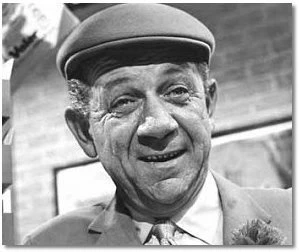
The following June the BBC gave Sid his own TV series, 'Citizen James'. The writers were Ray Galton and Alan Simpson. Both men later admitted that they wrote it because they felt sorry for the way Sid had been treated. In it, Sid played the part of Sidney Balmoral James (a name that has often, but incorrectly been cited as his real name), a fast-talking, quick-thinking gambler who only just managed to stay on the right side of the law. Alan Simpson said that it was exactly the same character that Sid had played in 'Hancock'. 'We just took Sid away from Hancock so he could carry on working on his get-rich-quick schemes.'
In fact, it wasn't until Talbot Rothwell started writing the scripts for the 'Carry On' films, with 'Carry On Cabby', that Sid was able to break away from the lovable rogue character that the British public had come to know him as. In it Sid plays Charlie, the owner of a cab company who is a workaholic to the point of neglecting his wife, Peggy (Hattie Jacques). When Charlie fails to show up for their wedding anniversary Peggy comes up with a scheme to teach him a lesson. She sets up a rival cab company staffed entirely by glamorous women, and steals all his business.
'Carry On' director Gerald Thomas recalled Sid's great comedy timing and his generosity as an actor: "He never resorted to any tricks at all, and he never upstaged anyone. He was a kid at heart. In 'Carry On Cowboy', I'd find him behind the scenery twirling a six-gun and trying to practice a fast draw. And he always liked to gamble. He would run a sweepstake every day based on how many minutes of film we'd shoot." The 'Carry On' series of films were hugely popular and each one managed to turn a profit within a month of their release. But the most Sid ever earned from a production was £5,000. Even so, this was around 7pound;2,000 more than many of the other actors were getting.
In 1966 Sid was offered a new series in which he would co-star with Peggy Mount. The sitcom, written by Vince Powell and Harry Driver, was called 'George And The Dragon'. It proved to be a big hit with viewers and Thames Television commissioned a second series, which went before the cameras in 1967. It was during the filming of an episode on May 13th that Mount noticed that Sid didn't look too well. Sid, in spite of suffering from chest pains, insisted that they finish the recording before going home. Early the next morning Sid was admitted to hospital in a serious condition. He had suffered a heart attack.
On hearing of Sid's heart attack one of the first people to phone Valerie was Tony Hancock. The call was short, Hancock wished his old friend well and ended the conversation abruptly. Neither Sid nor Valerie ever heard from Tony Hancock again. A year later he would take his own life.
In October 1967 Sid returned to work on the second series of 'George And The Dragon', although most of the people he worked with agreed that there were times during the recording of those episodes when he looked awful. Within days of completing 'George And The Dragon' he was back on the set for the latest 'Carry On' film. Because he was still not too well most of his scenes were rewritten so he spent most of 'Carry On Doctor' confined to a hospital bed. It was the first 'Carry On' in which Sid starred alongside Barbara Windsor.
Whenever one television series finished for Sid another wasn't far behind. In 1968 he began filming 'Two In Clover' with Victor Spinetti. They played a pair of stressed out city workers who turn their backs on the rat race and buy a small country farm. It can fairly be described as an early version of 'The Good Life', sans Surbiton. It proved popular enough to run for two series from February 1969 to March 1970. When it finished Sid was offered what would turn out to be his most successful and best-remembered sitcom; 'Bless This House'.
Created by Vince Powell and Harry Driver, 'Bless This House' was a studio based domestic comedy in which Sid starred, for the first time, as a family man. The character he played, Sid Abbott, was probably the closest he ever got to portray his real self on screen. Apart from the obvious difference (Sid Abbott worked by day as a rep for a stationery firm) the character's favourite pastimes were birds, booze and football. He may have also enjoyed the occasional flutter on the horses, too. In real life, Sid James 'occasional flutters' were nothing short of compulsive.
Also in 1971, Sid filmed 'Carry On Henry', in which he played a lecherous monarch in pursuit of the lovely Bettina, played by Barbara Windsor. Again, fiction was not far removed from the truth. Sid had become infatuated with Windsor through successive 'Carry On' films and by the time the series had reached the stage, in 'Carry On London', at the Victoria Palace in 1973, that infatuation had become an obsession.
Sid continued to pursue Barbara and shower her with gifts until they did in fact end up having an affair, but according to her, she never loved him. In her autobiography she wrote, 'I just wanted to get it over with. 'It'll get it out of his system,' I told myself.' Sid had other ideas. He confided in his friends that he was prepared to leave Valerie. In the end Barbara broke off the affair, but Sid was distraught and told Barbara that without her he'd be dead within a year. Sid's agent, Michael Sullivan, said that Sid never got over her. 'When he lost Barbara,' said Sullivan 'he lost the will to live.'
That year, 1975, Sid was preparing for a sixth season of 'Bless This House' and there was talk of a 'Sid James Television Special'. First though, Sid was due to go to Australia and star in the touring farce, 'The Mating Season'. It played to sell-out performances. When he returned to England with the same production in 1976, Thames Television signed a contract to record the play for transmission at Christmas.
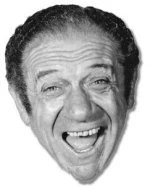
On Monday 26th April 1976, the curtain came up at the Empire Theatre, Sunderland. 'The Mating Season' was in the early weeks of a full-length provincial tour. Sid and co-star Olga Lowe delivered their opening lines. Sid was standing behind Lowe, so when she delivered a particular line she didn't understand why Sid did not responded to it. By this time Sid had opened his mouth to speak, then stepped back and lowered himself onto a sofa. At first Lowe thought that Sid was playing a trick so she ad-libbed. The audience thought it was part of the act and roared with laughter. But it was no trick. It was not part of the act. Sid James was dead.
Whatever the role, lovable rogue, lecherous lady-killer, or downtrodden husband, Sid James always came across as 'one-of-the-lads'. He effortlessly projected natural personal warmth and it was that that endeared him equally to his many fans as well as his fellow actors. After his death affectionate tributes poured in from the many showbiz personalities that had worked closely with him throughout his long career. 'Carry On' producer Gerald Thomas said; 'He was a super person to get on with. He had great comedy timing and he was a generous actor. He always encouraged young people. He never upstaged anyone. We've lost a fine comedy talent, and I have lost a great friend.'
Published on February 20th, 2019. Written by Laurence Marcus (2003) for Television Heaven.


